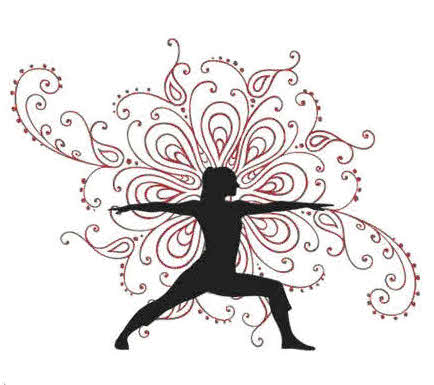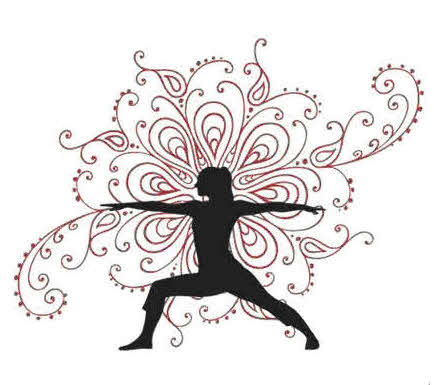
Garudasana
When I first started practising yoga Garudasana was simply the Eagle Pose ( Garuda is Eagle in Sanskrit) and the imagery that came to mind was of a Golden Eagle soaring in the Scottish sky, focusing and focusing on its prey and then suddenly with one glorious swoop of the wings diving down to catch the unsuspecting animal.
Studying further and looking at the chakras, you find that the Garudasana is advocated for the chakra situated at the Inner Eye, the Brow Chakra otherwise known as Ajna. Ajna is supposed to develop our powers of intuition.
When I was in Nepal, I learnt that Garuda is the bird that carries the god Vishnu and is therefore one of the most respected animals, since Vishnu is the god who maintains and preserves all created things. Garuda is supposed to have a white face, red wings and a gold body.
Let's build this posture up step by step. Remember just practising what is possible will move you towards the complete posture if you stick at it.
Legs
Step 1
Stand in Tadasana the Mountain pose and then bring the one foot immediately in front of the other. For some people just balancing like this can be a challenge.
Step 2
Take the one foot to the far side of the other foot.
If you are experiencing difficulty with this, you may well have a tight piriformis muscle. Don't give up and think this posture isn't for you. It is actually a very good one for you to do but be prepared to have to accept very slow progress even with regular practise.
Step 3
Hook the leg that you crossed over behind your standing leg.Imagine you are sitting on a bar stool and you really want to show off your wonderful legs, so you cross theone leg over and then hook it around the other leg. Simple!
Well maybe not but if you keep practising you will get there!
Step 4 The Arms
If you need to come out of the leg position and do the arms separately. You can always put both bits together later.
Bring the left arm to the middle of your body, bend the elbow and let the hand point up to heaven. See the photo below.
Step 5
Bring the other arm across the body under the already raised hand. This stretches the trapezius muscle and if it is tight, you may not be able to do this. Do not worry. If you have to settle for your lower arm pointing straight across the body to begin with, that is fine. Keep practising.
Step 6
Now try and straighten both palms so that the palm of the left hand faces right and the palm of the right hand faces left. To begin with the lower arm may struggle to catch hold of the thumb of the other arm but gradually the back of the palms will begin to lie flat against each other. Do not force the process. Yoga is the art of continual improvement by many extremely small steps!
Step 7
When you feel comfortable with both the leg position and the arm position, starting with getting the legs into position and then bringing the arms into position put both parts of the posture together.
As you gain confidence in holding the posture still and balanced, begin to bend the knee of the supporting leg. Keep your back elongated and in the neutral spine shape.
When you can start to gently focus your gaze beyond your palms into the distance and start relaxing the posture into one of calm by concentrating on your breathing. It is said that the gazing into the distance is what helps the Ajna the Chakra at the location of the Inner Eye.
By all means visualise yourself as a Golden eagle, strong and healthy and about to swoop or visualise yourself as Garuda with your white face, red wings and golden body about to take Vishnu on an important mission. Feel the strength in the posture and feel your legs being toned.
When you are ready, lift your arms up in a swooping motion, unwind your legs and return to Tadasana the Mountain pose.
The leg movement in this posture makes demands on the piriformis muscle which is often tight. This stretches it.
The legs are strengthened and made more shapely when Garudasana is practised regularly. Garudasana also improves balance.
Enjoy!






